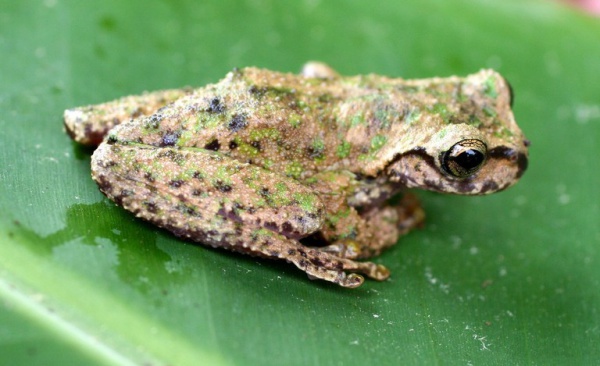Facts About Guatemala Spikethumb Frog
Meet the Guatemala Spikethumb Frog: *Plectrohyla guatemalensis*
The Guatemala spikethumb frog, scientifically known as *Plectrohyla guatemalensis*, is a captivating amphibian belonging to the Hylidae family. This diminutive creature inhabits the highlands of the Sierra Madre region. Its range extends from southeastern Chiapas in Mexico, traverses the central and southwestern highlands of Guatemala, reaches northwestern El Salvador, and even touches the Sierra de Nombre de Dios in north-central Honduras. Intriguingly, what we currently identify as *Plectrohyla guatemalensis* might, in fact, encompass more than one distinct species.
Size and Appearance
Male Guatemala spikethumb frogs typically measure between 40 and 52 mm in length, while females are marginally larger, ranging from 42 to 54 mm. They exhibit a moderately robust body, a head slightly broader than it is long, and prominent, noticeable eyes. One of their distinctive features is a heavy supra-tympanic fold, with males also bearing a bifid prepollex—a dual-spiked thumb. Their dorsal coloration varies significantly, spanning from dark green to reddish-brown, often decorated with various patterns and markings.
Habitat and Behavior
These frogs flourish in cloud forests, premontane, and lower montane forests at elevations between 900 and 2,800 meters above sea level. They show a particular preference for habitats near cascading mountain streams, which are vital for their breeding. During the day, they tend to hide in the axils of bromeliads or crevices along stream banks. By night, they become more active, frequently seen on limbs overhanging streams or perched on boulders within the streams.
Conservation Status
Formerly relatively common in El Salvador, Guatemala, and Honduras, the Guatemala spikethumb frog has now become a rare sight, especially in Mexico, where it hasn't been recorded since 1944. The population decline is primarily attributed to chytridiomycosis (a fungal disease) and habitat loss. Nevertheless, they can still be encountered in several protected areas, particularly in Honduras.
Importance of Conservation
The Guatemala spikethumb frog is a unique species confronting significant conservation challenges due to human activities and disease. Safeguarding their natural habitats is crucial for their survival, highlighting the need for sustained conservation efforts.

 Nicaragua
Nicaragua